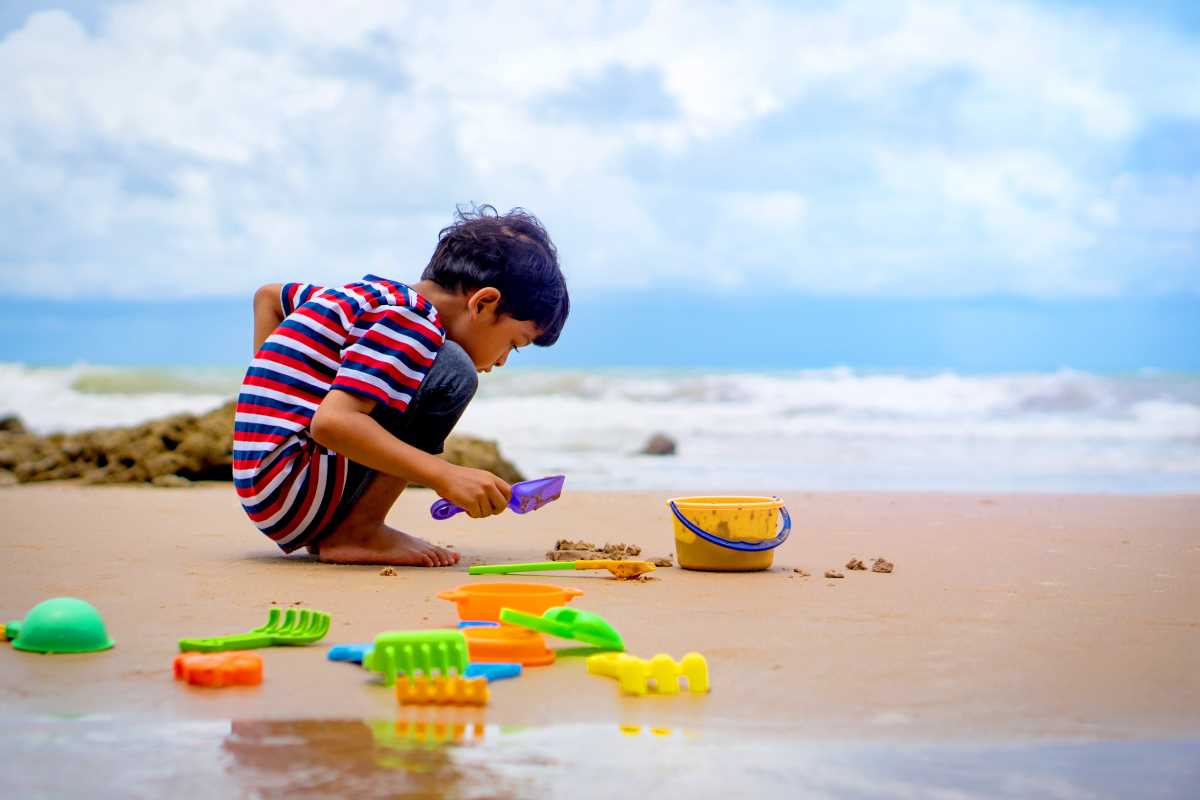Nothing beats a family trip to the beach. The sound of waves, the warm sand, and the excitement of kids splashing around under the sun makes the trip extra special. Beach vacations are fun, but they also come with a set of challenges, especially when you have to keep your kids safe. There are all sorts of dangers that present themselves like a strong sun to unpredictable water currents. Because of this, a little planning and know-how help you make sure everyone stays safe while making the most of your trip. We're sharing some simple yet essential tips to ensure your beach outing is fun and safe for the whole family.
1. Protect Kids from the Sun
The beach sun can be lovely but also intense and unforgiving, especially during midday when UV rays are strongest. Here’s how you can shield your kids from harmful sun exposure while still letting them enjoy the outdoors.
- Apply Sunscreen and Reapply!: Look for a broad-spectrum sunscreen with SPF 30 or higher. Apply it to all exposed skin at least 15–30 minutes before leaving. Don’t forget tricky spots like the ears, tops of feet, and the back of the neck. Reapply every two hours or right after swimming. Set a timer on your phone.
- Dress Smart: Lightweight, long-sleeved shirts and wide-brimmed hats are great options to give extra coverage. Sunglasses with UV protection can help protect their sensitive eyes. They’ll look cool and stay safe.
- Seek Shade: Bring a beach umbrella or pop-up tent to give the kids a shady spot to rest. Encourage breaks out of the sun, especially between 10 AM and 4 PM when the sun’s rays are strongest.
Staying consistent with sun protection will lower the risk of painful sunburns and long-term skin damage. And trust us, no one wants to deal with a cranky, sunburned kid while on vacation.
2. Keep a Close Eye on Water Safety
The ocean is beautiful, but it can also be unpredictable. Prioritize water safety for your kids regardless of whether they're seasoned swimmers or just starting out.
- Swim in Designated Areas: Try to pick a beach with lifeguards on duty and pay attention to flags or signs about water conditions. Red flags usually mean no swimming due to strong currents or rip tides.
- Know Their Swimming Skill Level: Be honest about what your kids can and can’t handle in the water. Floaties or life jackets can offer extra safety for younger or less confident swimmers.
- Teach Them About Rip Currents: Rip currents can pull even strong swimmers out to sea. Teach your kids to swim parallel to the shore if they’re caught in one and not to panic.
- Don’t Turn Your Back: The ocean’s waves can knock kids (and adults) off their feet in seconds. Stay close to your little ones and always keep an eye on them, even if the water looks calm.
The ocean provides endless entertainment, but safety has to come first. You’ll avoid unnecessary scares and help your kids build confidence in the water by staying vigilant.
3. Stay Hydrated
All the running around, building sandcastles, and splashing can tire kids out quickly. Combine that with the heat, and dehydration can sneak up fast. Staying hydrated is key.
- Pack Plenty of Water: Bring a cooler packed with lots of water bottles or reusable bottles filled with cold water. Encourage your kids to drink regularly, even if they don’t feel thirsty.
- Light Snacks Are Important: Include hydrating snacks like watermelon, cucumbers, and oranges. These are refreshing and help replenish fluids.
- Avoid Sugary Drinks: Juice boxes and sodas are tempting, but they don’t hydrate as well as water and can leave kids feeling sluggish.
Keeping those water bottles nearby ensures everyone feels their best and is ready for more beach fun without hitting a mid-day energy slump.
4. Be Prepared for Minor Injuries
The beach is full of surprises, and sometimes kids get bumps, scrapes, or even jellyfish stings. Being prepared can make dealing with minor incidents much easier.
- Create a Simple First Aid Kit: Include essentials like bandaids, antiseptic wipes, tweezers for splinters, and aloe vera gel for sunburns. Travel-size versions of these items will be easy to pack.
- Teach “Look-But-Not-Touch” Rules: Encourage your kids to look at but not pick up everything they see.
- Know Jellyfish Protocol: Jelly fish stings should be rinsed with vinegar (not fresh water) to help neutralize the sting. Consider bringing a small bottle if you know jellyfish are in the area.
It’s not about being overly cautious but being ready just in case. A little preparation goes a long way in handling minor bumps and bruises with confidence.
5. Set Clear Rules for Adventure Time
Kids love exploring, and the beach offers endless opportunities for adventure. Setting boundaries of where they can go is incredibly important.
- Create a Meeting Spot: Pick a clear, easy-to-spot location as a family meeting point. Anyone who gets separated will know exactly where to go.
- Set Limits on How Far They Can Go: Explain to your kids where it’s safe for them to play. Consider drawing a line in the sand so there's a visual barrier.
- Remind Them About Wildlife: Teach your kids to respect beach animals like crabs or seagulls. It’s fun to watch them, but disturbing wildlife can hurt both the creatures and the kids.
These rules keep everyone safe while still letting kids feel free to explore and enjoy themselves.
 (Image via
(Image via





